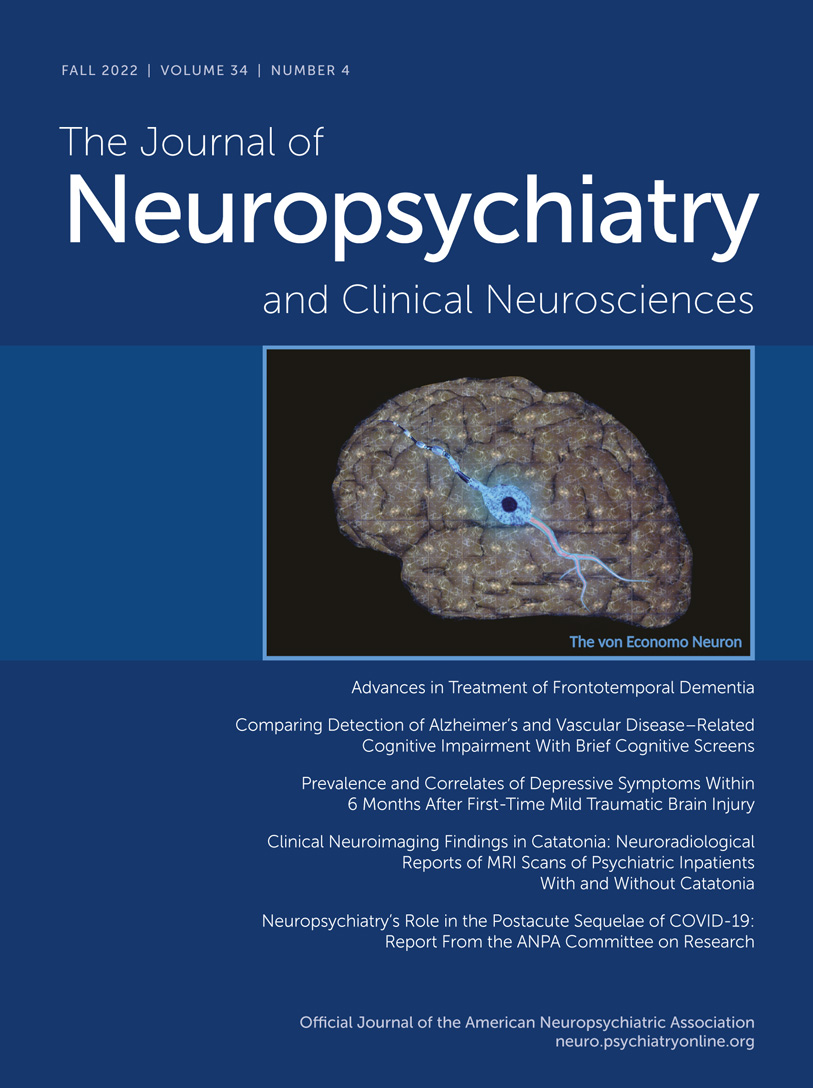Clinical Neuroimaging Findings in Catatonia: Neuroradiological Reports of MRI Scans of Psychiatric Inpatients With and Without Catatonia
Abstract
Objective:
Catatonia is a debilitating psychomotor disorder. Previous neuroimaging studies have used small samples with inconsistent results. The authors aimed to describe the structural neuroradiological abnormalities in clinical magnetic resonance imaging (MRI) brain scans of patients with catatonia, comparing them with scans of psychiatric inpatients without catatonia. They report the largest study of catatonia neuroimaging to date.
Methods:
In this retrospective case-control study, neuroradiological reports of psychiatric inpatients who had undergone MRI brain scans for clinical reasons were examined. Abnormalities were classified by lateralization, localization, and pathology. The primary analysis was prediction of catatonia by presence of an abnormal MRI scan, adjusted for age, sex, Black race-ethnicity, and psychiatric diagnosis.
Results:
Scan reports from 79 patients with catatonia and 711 other psychiatric inpatients were obtained. Mean age was 36.4 (SD=17.3) for the cases and 44.5 (SD=19.9) for the comparison group. Radiological abnormalities were reported in 27 of 79 cases (34.2%) and in 338 of 711 in the comparison group (47.5%) (odds ratio [OR]=0.57, 95% confidence interval [CI]=0.35, 0.93; adjusted OR=1.11, 95% CI=0.58, 2.14). Among the cases, most abnormal scans had bilateral abnormalities (N=23, 29.1%) and involved the forebrain (N=25, 31.6%) and atrophy (N=17, 21.5%).
Conclusions:
Patients with catatonia were commonly reported to have brain MRI abnormalities, which largely consisted of diffuse cerebral atrophy rather than focal lesions. No evidence was found that these abnormalities were more common than in other psychiatric inpatients undergoing neuroimaging, after adjustment for demographic variables. Study limitations included a heterogeneous control group and selection bias in requesting scans.



